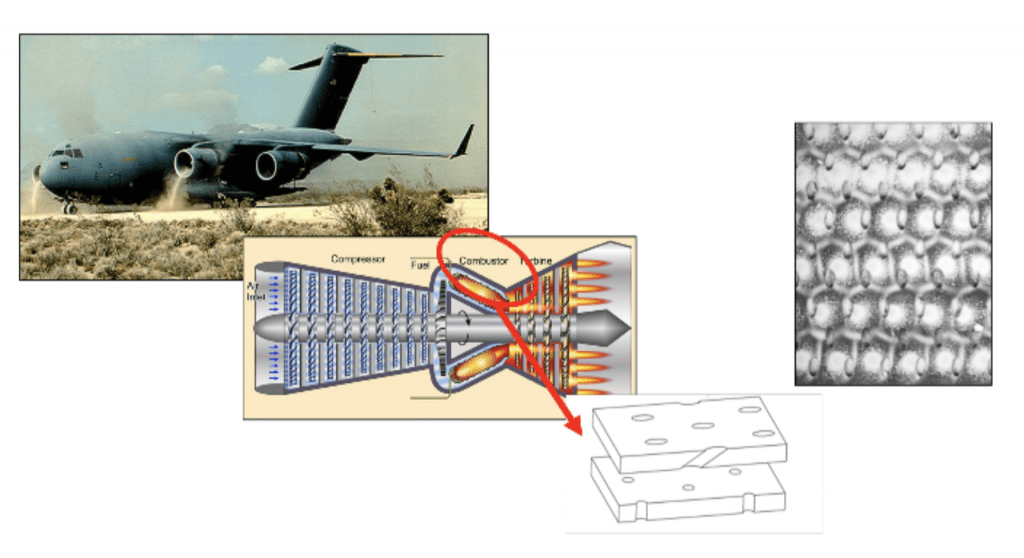Current Projects
ASCENT Project 56: Reduced Fuel Burn through Double-Wall Cooling of Turbine Airfoils Made Possible through Additive
Sponsor: Federal Aviation Administration
Collaborator: Pratt & Whitney
Gains in cooling performance of cooled turbine airfoils have a direct impact on the efficiency of turbine engines and therefore are the subject of much development. Today, many cooling designs for turbine airfoils use complex micro-channels placed in the wall of the airfoil to extract heat, which is otherwise known as double-wall cooling. The geometric complexities of the micro-channels, however, are limited by the casting process for these relatively small features. One approach in the manufacture of these complex channels is the use of metal-based additive manufacturing (AM), which is also known as laser-powdered bed fusion. AM has begun to see many uses in the gas turbine industry, particularly because of the new design space enabled by this new fabrication method. However, not only does AM open up new design opportunities, but it also provides a quick turnaround from design concept to manufactured components relative to the traditional casting process.
The impact of this work is twofold: i) to develop an optimized micro-channel (double-wall) cooling design that will result in reduced cooling air but maintain turbine airfoil durability, and ii) to assess the viability of using additive manufacturing to print complex double-wall cooling designs. While optimization methods have been employed to develop new cooling technologies, the success of these technologies is only made possible if the designs can be made feasible. Thole’s previous research, has shown that it is feasible to use optimization methods to develop unique cooling features and, although this previous research was not done for airfoil cooling, a similar methodology could be employed for this project.
ASCENT Project 68: Combustor Wall Cooling Concepts for Dirt Mitigation
Sponsor: Federal Aviation Administration
Collaborator: Pratt & Whitney
One of the most critical issues related to the operation of a gas turbine in today’s world is the ingestion of dirt and other fine particles that lead to blockages of cooling holes and passages required for effectively cooling the walls of the combustion chamber. Because the need to fly in dirty environments is on the rise, the criticality of operations in dirty environments is increasing. Modern gas turbine engines typically employ a double-walled combustor liner with impingement and effusion cooling plates whereby impingement cooling enhances the backside internal cooling and effusion cooling creates a protective film of coolant along the external liner walls. Dirt accumulation on the internal surfaces severely diminish the heat transfer capability of these cooling designs. Additionally, dirt accumulates on the external surfaces of combustor panels.
The impact of this work is twofold: i) to develop a cooling design for combustor liners that is insensitive to “dirty” cooling air; and ii) to characterize the cooling performance and the impact that the cooling design has on the downstream turbine.

